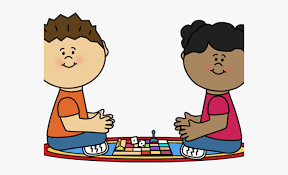

Parvinder and Carlos are each rolling a standard six-sided die, with numbers \(1\) to \(6\) on its sides, to see who gets to go first in their game. The person who rolls the lower number gets to go first. If they tie, they roll again.
What is the theoretical probability that Parvinder will roll a number lower than Carlos on their first roll? Hint: What are the possibilities for Carlos’ roll if Parvinder rolls a \(1\)? a \(2\)? a \(3\)?
What is the theoretical probability that Parvinder will roll a number greater than Carlos on their first roll?
Is this a fair way to determine who goes first?

The following table shows all the possible rolls. For each possibility, there is a T if Parvinder and Carlos roll the same number, a P if Parvinder rolls a number lower than Carlos, and a C if Carlos rolls a number lower than Parvinder.
| Carlos' Roll | |||||||
|---|---|---|---|---|---|---|---|
| 1 | 2 | 3 | 4 | 5 | 6 | ||
| Parvinder's Roll | 1 | T | P | P | P | P | P |
| 2 | C | T | P | P | P | P | |
| 3 | C | C | T | P | P | P | |
| 4 | C | C | C | T | P | P | |
| 5 | C | C | C | C | T | P | |
| 6 | C | C | C | C | C | T | |
The table shows that the total number of possible rolls is \(6\times 6 = 36\).
There are \(15\) Ps in the table. These occur when Parvinder rolls a number lower than Carlos. Thus, the theoretical probability that Parvinder rolls a number lower than Carlos on their first roll is \(\frac{15}{36}=\frac{5}{12}\).
There are \(15\) Cs in the table. These occur when Parvinder rolls a number greater than Carlos. Thus, the theoretical probability that Parvinder rolls a number greater than Carlos on their first roll is \(\frac{15}{36}=\frac{5}{12}\).
From (a) and (b), we see that the probabilities of each person rolling the lower number are the same. Therefore, this is a fair way to determine who goes first.